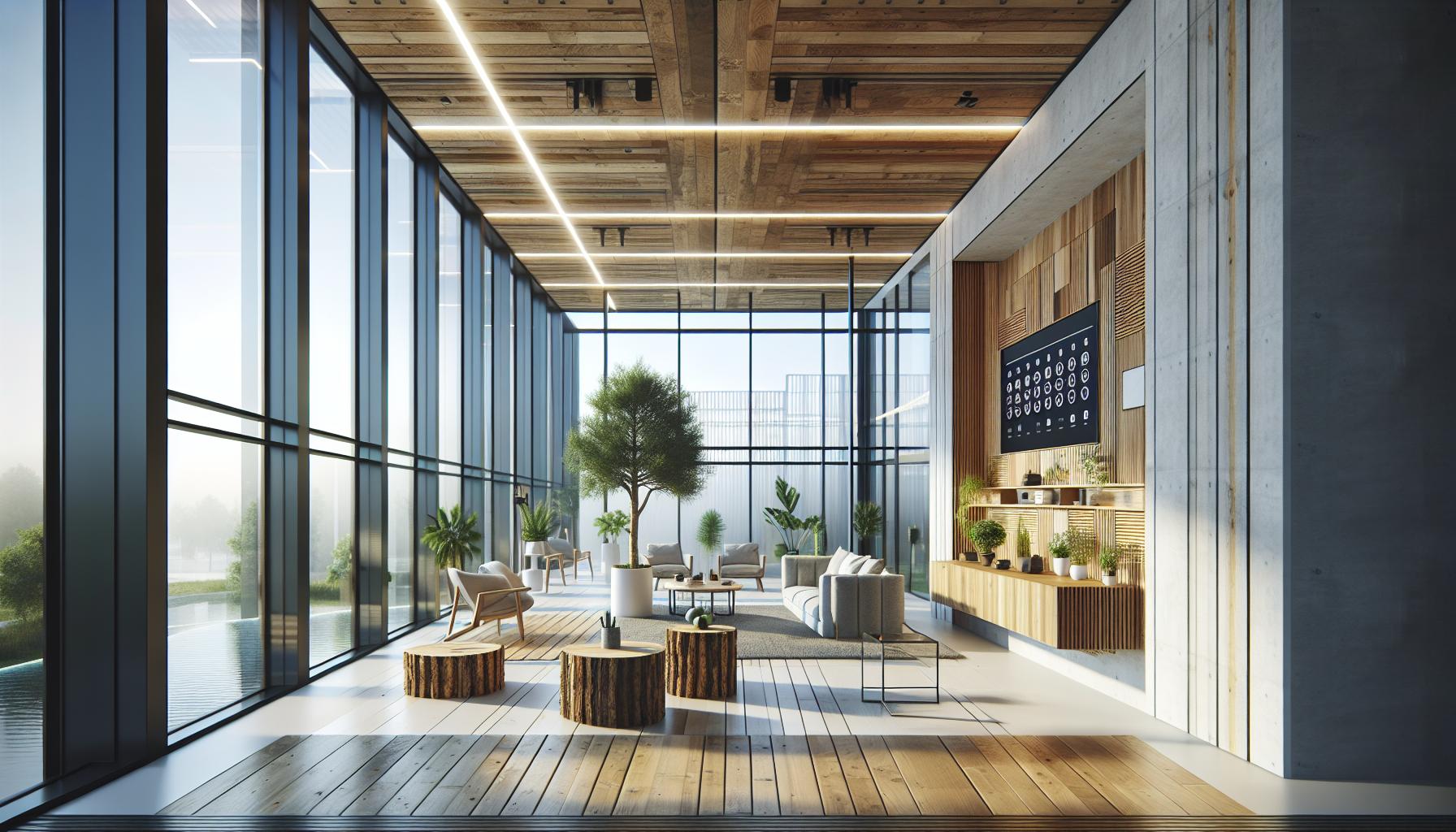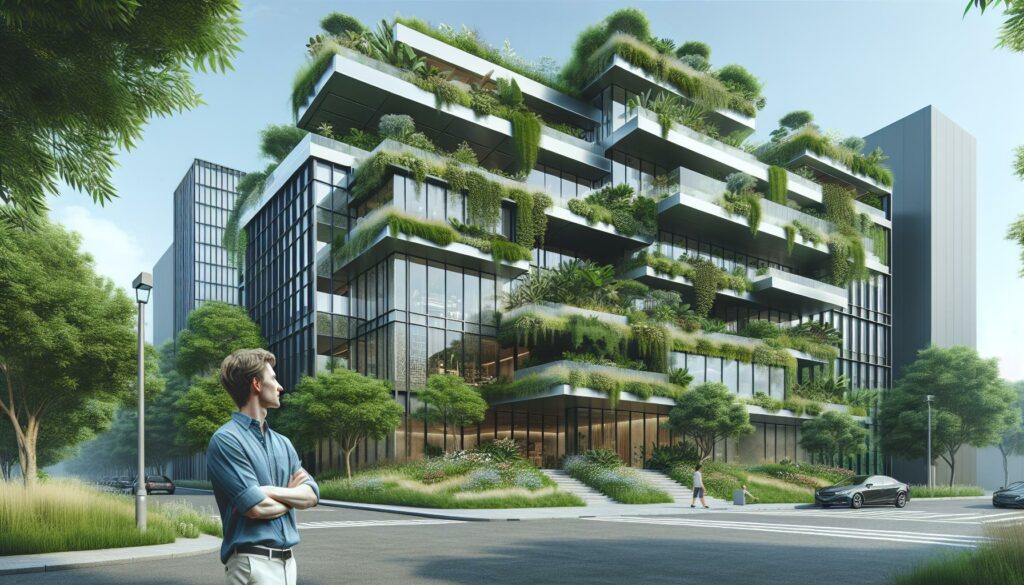In a world where buildings are no longer just four walls and a roof, the latest architectural trends are shaking things up like a toddler with a box of crayons. Today’s architects are blending sustainability with cutting-edge design, creating spaces that not only look good but also do good. Imagine living in a home that breathes, dances with the wind, and maybe even tells you a joke or two—well, that’s the future!
Latest Architectural Trends
Latest architectural trends emphasize sustainability and innovative aesthetics. Modern designs seek to harmonize with the environment and enhance occupant well-being. Nature-based designs lead the charge, focusing on biophilic approaches that integrate natural elements into spaces.
Sustainable materials gain popularity, prioritizing eco-friendly options such as reclaimed wood, bamboo, and recycled metal. These materials not only reduce ecological footprints but also offer unique visual appeal.
Smart technology finds its place in architecture, allowing for energy efficiency and enhanced user experiences. Integrated systems enable better management of heating, lighting, and security, creating responsive environments.
Open floor plans continue to dominate residential designs, promoting fluidity and flexibility in living spaces. This approach facilitates collaboration and interaction among inhabitants while allowing for personal customization.
Adaptive reuse practices become more prevalent, transforming old structures into functional spaces. These renovations reduce waste and preserve the history of communities, reflecting a growing appreciation for heritage.
Minimalism persists as a strong design philosophy, emphasizing clean lines and uncluttered spaces. This trend prioritizes functionality while maintaining understated elegance, appealing to contemporary sensibilities.
Color palettes evolve toward earth tones and soft hues, creating calming atmospheres. Designers consciously select colors that foster a sense of tranquility and connection to nature.
The latest architectural trends encapsulate a commitment to sustainability, innovation, and harmony with nature, shaping the future of design in meaningful ways.
Sustainable Design

Sustainable design emphasizes environmentally responsible practices in architecture. This approach aims to minimize negative impacts on the environment while enhancing human well-being.
Eco-Friendly Materials
Sustainable materials play a significant role in modern architecture. Reclaimed wood, for instance, reduces waste and adds unique character to designs. Bamboo’s rapid growth makes it a popular choice for flooring and furniture due to its renewability. Other materials like recycled metals and low-VOC paints minimize harmful emissions. Designers increasingly select these eco-friendly options to create healthier interiors. Innovations in materials also promote longevity, ensuring structures withstand the test of time.
Energy Efficiency
Energy efficiency remains a key focus in sustainable architecture. Smart technologies optimize energy consumption in heating and cooling systems. Solar panels capture renewable energy, often reducing reliance on non-renewable sources. Strategically placed windows maximize natural light, decreasing the need for artificial lighting during the day. Insulation techniques are also advancing, leading to better thermal performance and lower energy bills. Such measures enhance occupant comfort while significantly decreasing environmental footprints.
Smart Architecture

Smart architecture shapes modern design through technology integration and user-centric features. It addresses energy efficiency while enhancing occupant experiences.
Integration of Technology
Technology integration in architecture enhances the functionality of buildings. Smart sensors control lighting, heating, and cooling systems automatically, adjusting based on occupancy and environmental changes. Homeowners can monitor energy usage through mobile applications in real time, providing insights that encourage energy-saving behaviors. Virtual reality tools support design visualization, allowing clients to experience spaces before construction begins. Advanced materials, such as self-healing concrete and energy-generating facades, also contribute to increased structural durability and reduced energy consumption. These innovations illustrate how technology collaborates with architectural design to promote sustainability and comfort.
Automation in Home Design
Automation in home design creates seamless living experiences. Smart thermostats optimize energy consumption by learning user preferences, ensuring comfortable temperatures without excessive energy use. Automated shading systems adjust to sunlight, reducing heat gain and glare throughout the day. Voice-activated devices simplify home control, letting residents manage utilities and security effortlessly. Integrated home security systems permit remote monitoring and alerts, creating peace of mind. Furthermore, smart kitchens utilize connected appliances that streamline daily tasks, making cooking and organization efficient. Automation significantly improves convenience, promoting a harmonious balance between technology and daily living.
Minimalism And Functionality

Minimalism prioritizes simplicity, promoting clean lines and uncluttered spaces. Functionality remains essential, ensuring that each element serves a purpose. These design principles enhance overall aesthetics while optimizing user experience.
Open Floor Plans
Open floor plans emphasize connectivity and spaciousness, blurring the lines between distinct living areas. Natural light flows freely across spaces, creating a warm and inviting atmosphere. Designers often advocate for flexible layouts, allowing for easy reconfiguration to suit various activities. This approach fosters social interaction, making living areas more functional for gatherings.
Multi-Functional Spaces
Multi-functional spaces meet diverse needs by combining multiple uses into one area. For example, a living room can also serve as a home office or guest room. This trend maximizes square footage, making smaller homes feel more expansive. Various furniture options, like foldable tables and convertible sofas, facilitate versatility and adaptability.
Biophilic Design
Biophilic design focuses on creating spaces that enhance the connection between people and nature. It emphasizes the integration of natural elements into architectural environments.
Connection with Nature
Connection with nature plays a vital role in biophilic design. Incorporating plants, water features, and natural materials creates calming and restorative environments. Research shows that exposure to nature reduces stress and improves overall well-being. Landscaped gardens and green rooftops enhance air quality and provide habitats for wildlife. Additionally, spaces that blend seamlessly with their surroundings foster a sense of belonging. Architects increasingly prioritize designs that invite the outdoors in, creating a harmonious balance between interior and exterior environments.
Use of Natural Light
Use of natural light significantly influences biophilic design principles. Well-placed windows, skylights, and open layouts maximize sunlight accessibility. Structures designed to harness daylight not only lower energy costs but also improve occupants’ mood and productivity. Enhanced daylighting reduces reliance on artificial lighting, supporting sustainability goals. Designers often prioritize orientation and shading to optimize light entry throughout different seasons. Creating spaces bathed in natural light cultivates a vibrant atmosphere that invigorates and inspires.
Future of Architecture
The latest architectural trends showcase a transformative approach to design that prioritizes sustainability and innovation. By blending natural elements with cutting-edge technology, architects are creating spaces that not only look stunning but also enhance well-being.
The focus on biophilic design and smart architecture reflects a deeper understanding of how environments impact daily life. As these trends continue to evolve, they promise to redefine how individuals interact with their surroundings.
This commitment to eco-friendly materials and efficient design principles marks a significant shift in architecture, ensuring that future spaces are both functional and harmonious with nature. The result is a more thoughtful and connected living experience that resonates with the needs of modern occupants.



